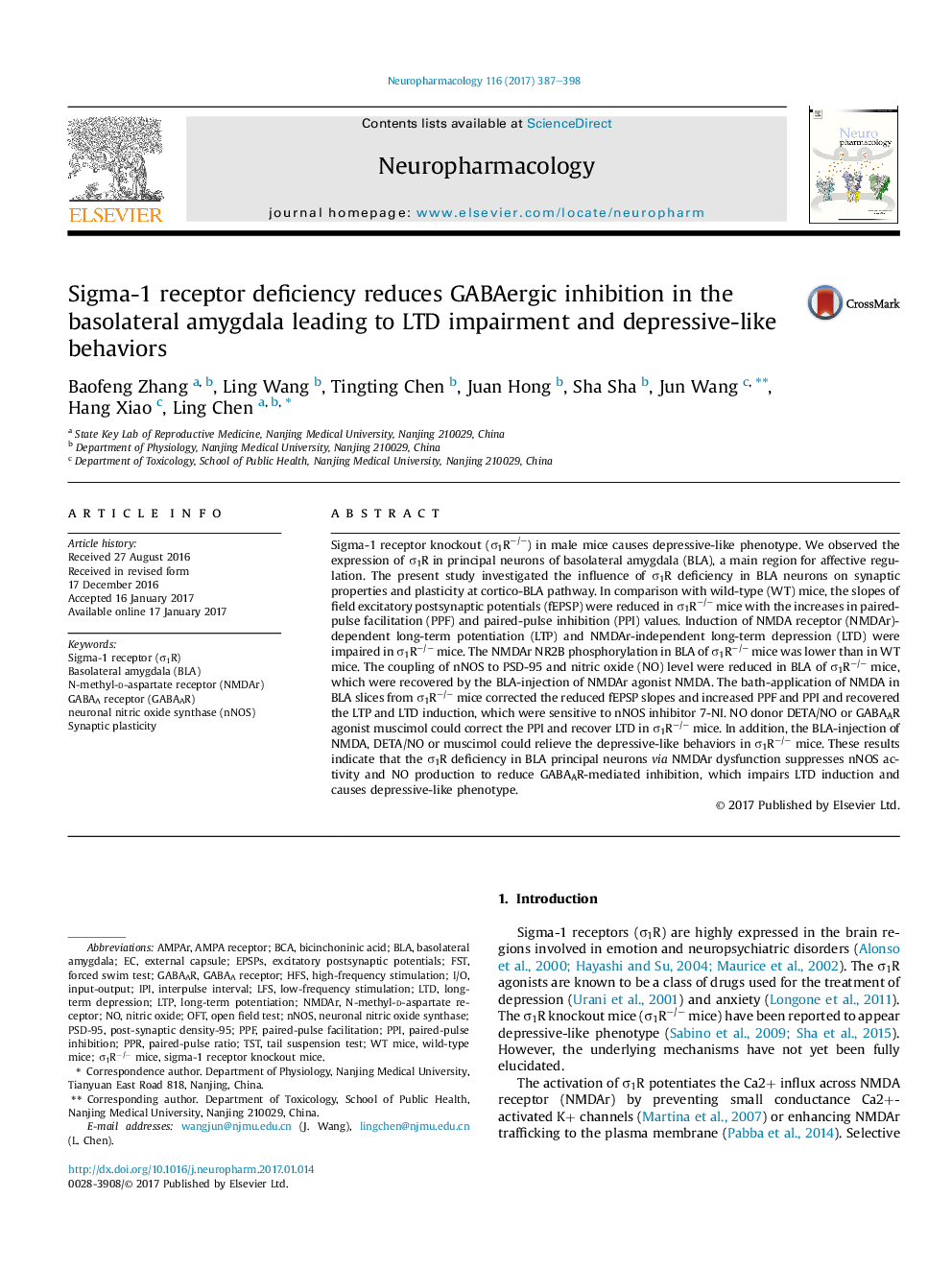| Article ID | Journal | Published Year | Pages | File Type |
|---|---|---|---|---|
| 5548957 | Neuropharmacology | 2017 | 12 Pages |
â¢Ï1R deficiency in BLA neurons reduces nNOS activity via low phosphorylation of NR2B.â¢Reduced NO production in BLA neurons reduces presynaptic glutamate and GABA release.â¢Decline of GABAAR-mediated inhibition impairs LTD induction in BLA.â¢Impaired LTD in BLA is associated with depressive-like behaviors in Ï1Râ/â mice.
Sigma-1 receptor knockout (Ï1Râ/â) in male mice causes depressive-like phenotype. We observed the expression of Ï1R in principal neurons of basolateral amygdala (BLA), a main region for affective regulation. The present study investigated the influence of Ï1R deficiency in BLA neurons on synaptic properties and plasticity at cortico-BLA pathway. In comparison with wild-type (WT) mice, the slopes of field excitatory postsynaptic potentials (fEPSP) were reduced in Ï1Râ/â mice with the increases in paired-pulse facilitation (PPF) and paired-pulse inhibition (PPI) values. Induction of NMDA receptor (NMDAr)-dependent long-term potentiation (LTP) and NMDAr-independent long-term depression (LTD) were impaired in Ï1Râ/â mice. The NMDAr NR2B phosphorylation in BLA of Ï1Râ/â mice was lower than in WT mice. The coupling of nNOS to PSD-95 and nitric oxide (NO) level were reduced in BLA of Ï1Râ/â mice, which were recovered by the BLA-injection of NMDAr agonist NMDA. The bath-application of NMDA in BLA slices from Ï1Râ/â mice corrected the reduced fEPSP slopes and increased PPF and PPI and recovered the LTP and LTD induction, which were sensitive to nNOS inhibitor 7-NI. NO donor DETA/NO or GABAAR agonist muscimol could correct the PPI and recover LTD in Ï1Râ/â mice. In addition, the BLA-injection of NMDA, DETA/NO or muscimol could relieve the depressive-like behaviors in Ï1Râ/â mice. These results indicate that the Ï1R deficiency in BLA principal neurons via NMDAr dysfunction suppresses nNOS activity and NO production to reduce GABAAR-mediated inhibition, which impairs LTD induction and causes depressive-like phenotype.
